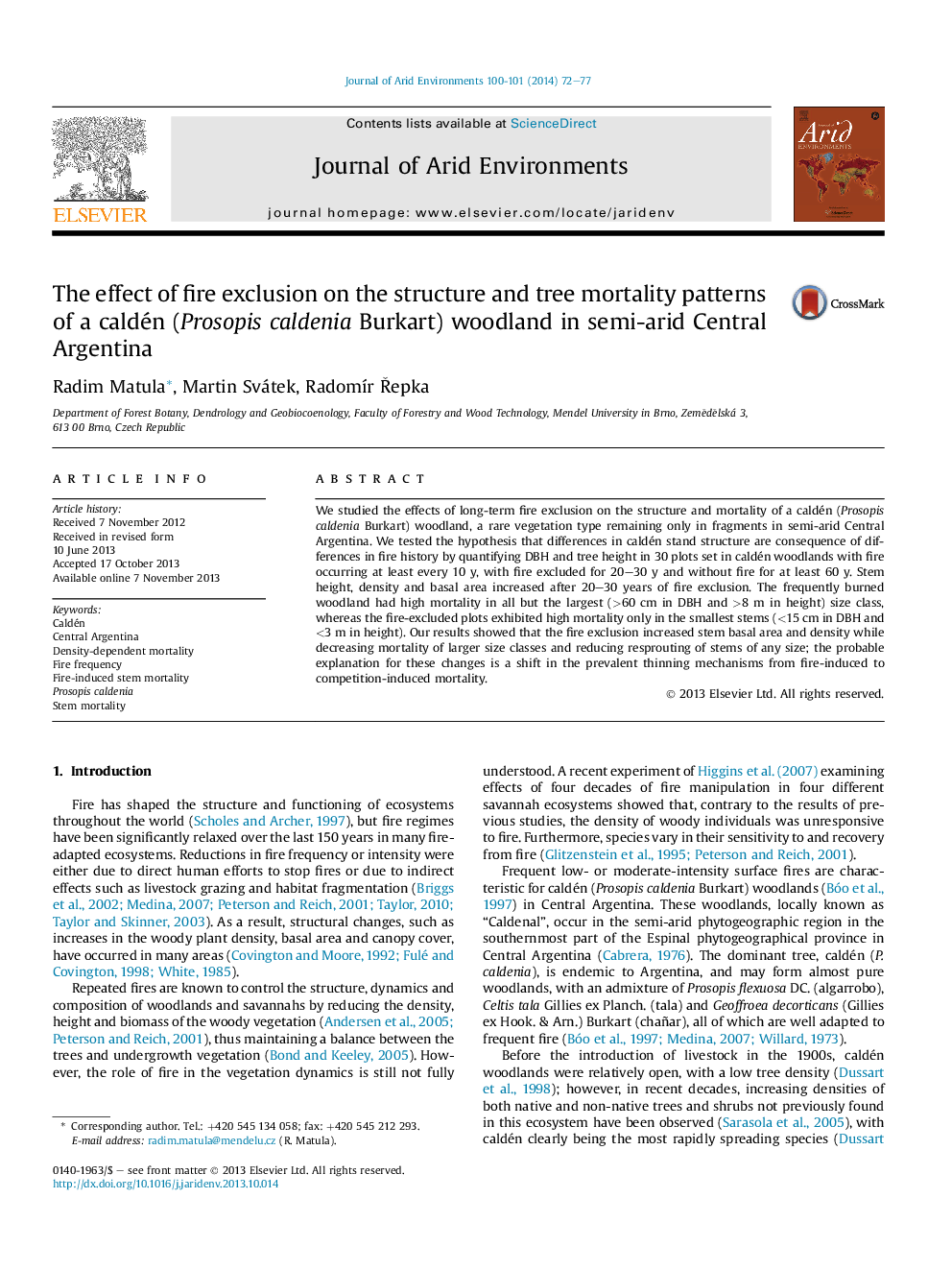| Article ID | Journal | Published Year | Pages | File Type |
|---|---|---|---|---|
| 4393054 | Journal of Arid Environments | 2014 | 6 Pages |
Abstract
We studied the effects of long-term fire exclusion on the structure and mortality of a caldén (Prosopis caldenia Burkart) woodland, a rare vegetation type remaining only in fragments in semi-arid Central Argentina. We tested the hypothesis that differences in caldén stand structure are consequence of differences in fire history by quantifying DBH and tree height in 30 plots set in caldén woodlands with fire occurring at least every 10Â y, with fire excluded for 20-30Â y and without fire for at least 60Â y. Stem height, density and basal area increased after 20-30Â years of fire exclusion. The frequently burned woodland had high mortality in all but the largest (>60Â cm in DBH and >8Â m in height) size class, whereas the fire-excluded plots exhibited high mortality only in the smallest stems (<15Â cm in DBH and <3Â m in height). Our results showed that the fire exclusion increased stem basal area and density while decreasing mortality of larger size classes and reducing resprouting of stems of any size; the probable explanation for these changes is a shift in the prevalent thinning mechanisms from fire-induced to competition-induced mortality.
Related Topics
Physical Sciences and Engineering
Earth and Planetary Sciences
Earth-Surface Processes
Authors
Radim Matula, Martin Svátek, RadomÃr Åepka,
